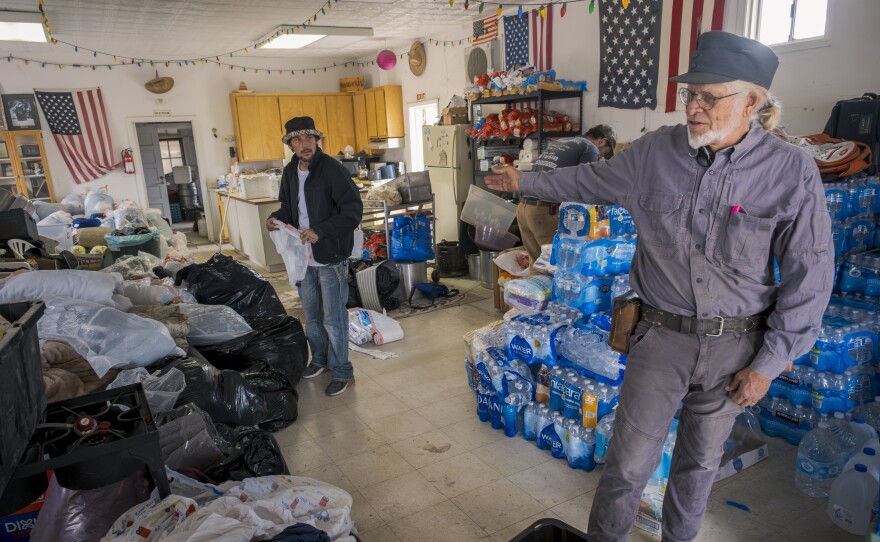It's quite the scene, if you know where to look.
Months after three migrant camps first formed near Jacumba Hot Springs, they're still going strong, despite the colder and wetter weather.
Julian, who didn’t want to use his last name, is from Colombia. He's fleeing persecution in his home country due to anti-LGBTQ discrimination.

He described the weather at the makeshift camp on Wednesday, during the single day he’s been there.
“The conditions have been unfavorable, very cold,” he said in Spanish.
Sam Schultz is a Jacumba resident, and having boots-on-the-ground helps many of the migrants.
Working alongside the nonprofit organizations Al Otro Lado and Border Kindness, his team has been providing food, water and warmth seven days a week.

He said firewood, blankets, warmer clothing and better shelter are what the migrants at the sites now need the most.
“The movement has actually accelerated. There are more people going through every day, an average of 350 to 500 (people) per day through the camps,” Schultz said. “The big change is that the border patrol has become more efficient at moving them out.”
Schultz said Customs and Border Protection started detaining migrants at a trio of sites near Jacumba back in May of this year.
But now the weather is very different.
“Even though 40 (degrees) doesn’t sound cold compared to other places, remember these are people without proper clothing,” said Kaiser Permanente physician Dr. Vi Nguyen. “It's nighttime, exposed, some are really young. And we're worried mostly about the kids.”

Nguyen said medical concerns are a serious issue at the sites.
“My main medical concerns as a physician would be hypothermia — especially for those who are very young, or with underlying medical conditions — cardiovascular events and spread of infectious diseases — especially respiratory,” she said. “And we’re worried particularly about flu.”
In a statement a CBP spokesperson said they are “leveraging all available resources and partnerships to efficiently vet and process migrants consistent with (the) law.”
The government organization said they are also prioritizing the health and safety of all they encounter “by providing appropriate medical care and humanitarian assistance as needed, and by routinely coordinating with emergency medical services to assist individuals in need. ”

Schultz said the situation is now dire and the government needs to take action.
He said it can snow in Jacumba during the colder months and temperatures often fall into the 30s.








